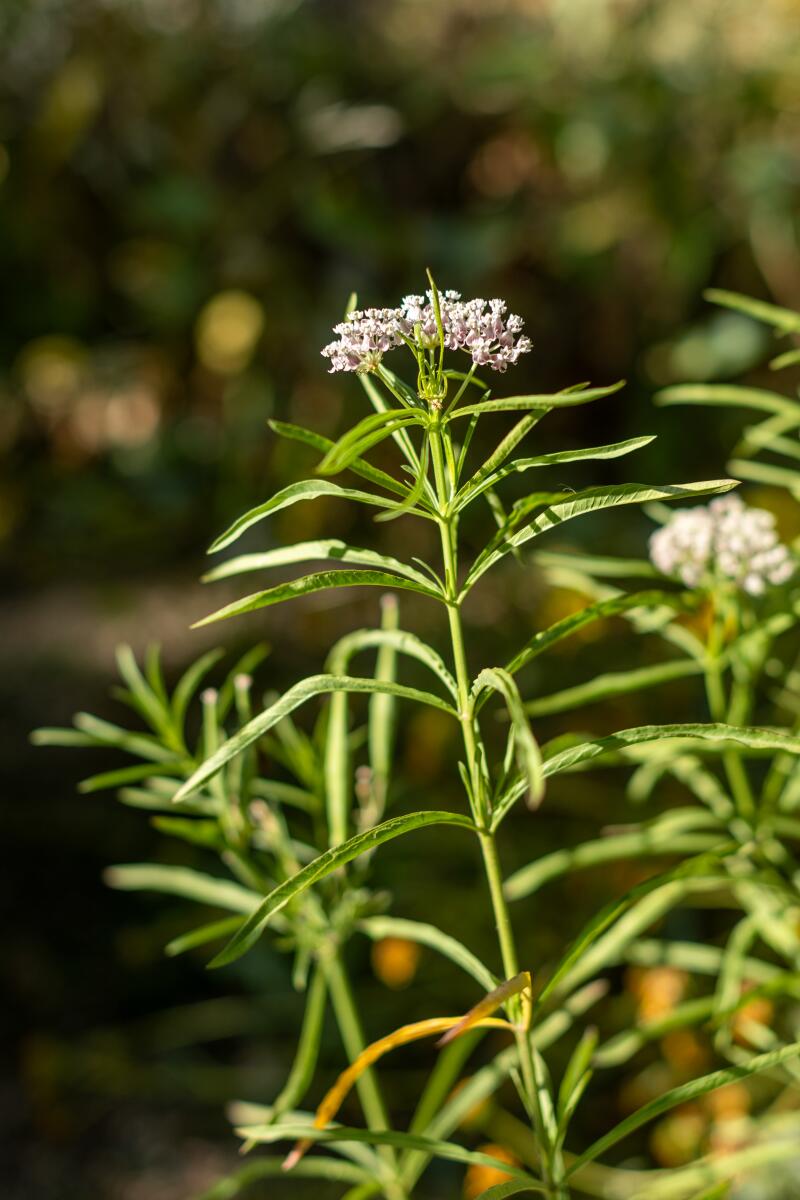Water-hungry lawns are symbols of Los Angeles’ previous. In this sequence, we highlight yards with various, low-water landscaping constructed for the long run.
The temperature was within the 90s in West Hills, however that didn’t deter an astonishing variety of monarch butterflies, hummingbirds and bees from feeding on the California-friendly vegetation — sages, salvias and flowering milkweed — in Eric Augusztiny’s entrance yard.
Pollinators, nonetheless, aren’t the one ones who name the entrance yard dwelling. “That is our buddy, Lizzy,” Augusztiny mentioned with a smile as he and his spouse, Lise Ransdell, greeted an unlimited lizard that crawled out from below a big Salvia ‘Desperado’ plant.
“It’s only a postage-stamp suburban yard, however there’s rather a lot occurring right here,” Ransdell mentioned of the yard’s considerable wildlife, which counts rabbits, skunks, raccoons and possums as guests.
It wasn’t all the time like this. When Augusztiny bought the house in 1996, the normal yard appeared like many others on his avenue, with a Bermuda grass garden, assorted shrubs and an apricot tree.
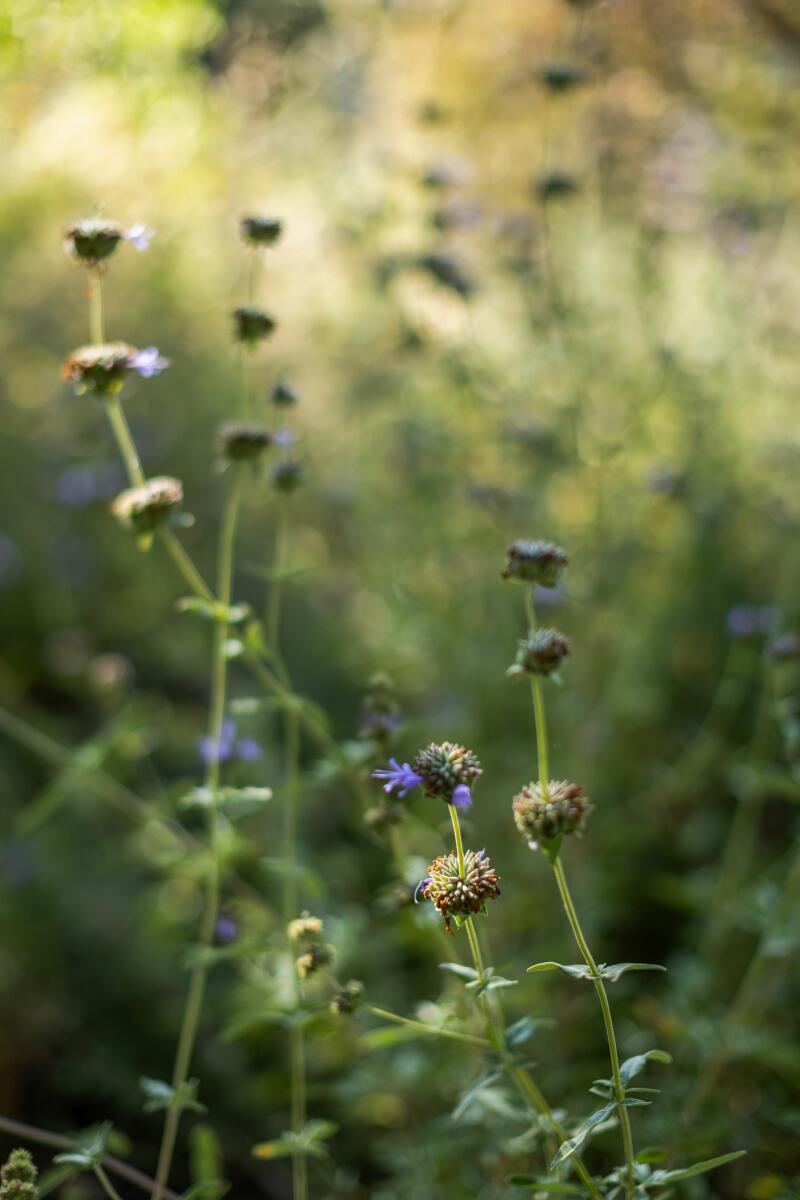
Milkweed, a favourite of monarch butterflies, left. Cleveland sage, Salvia clevelandii. (Myung J. Chun / Los Angeles Instances)
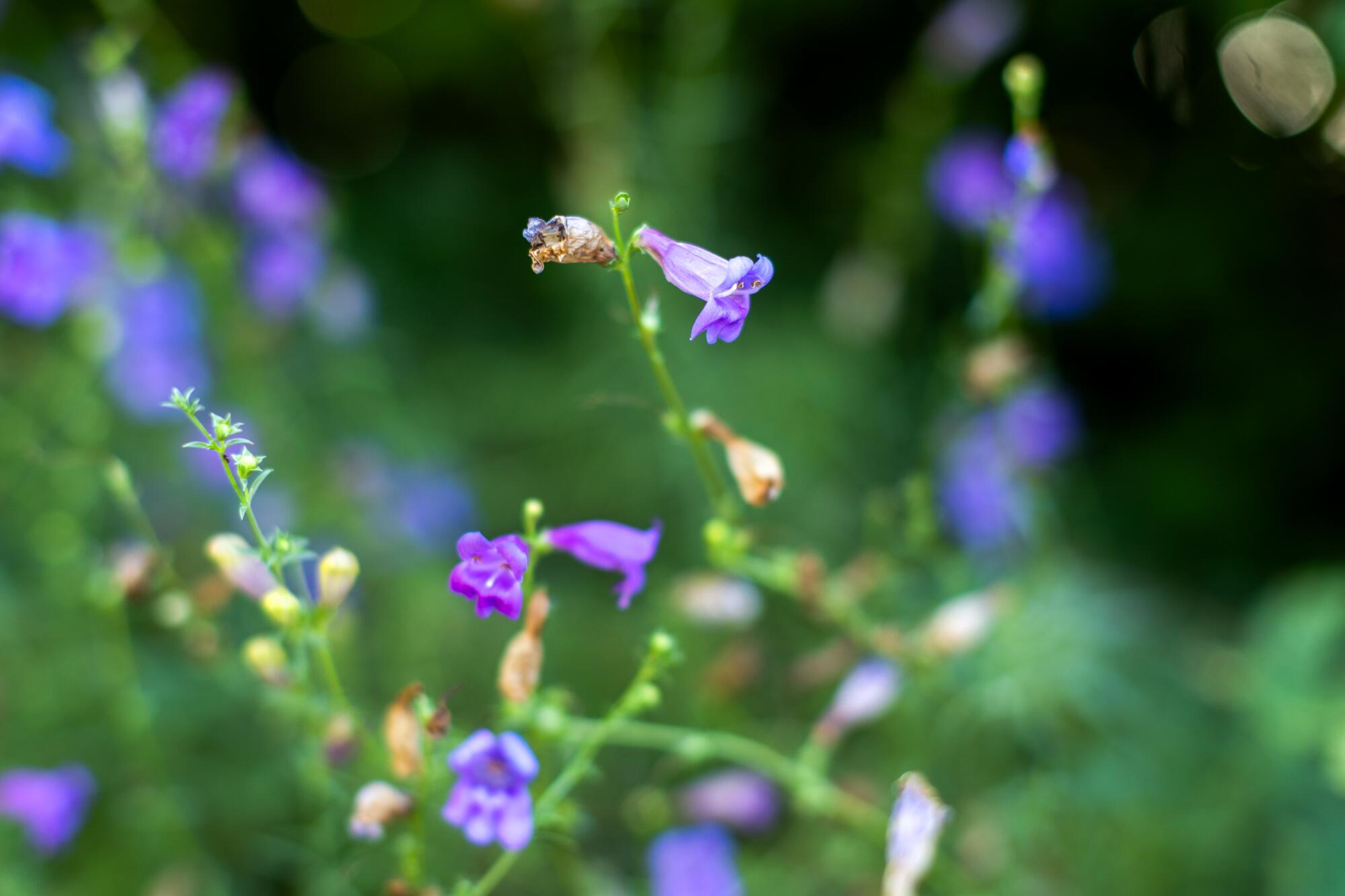
Foothill penstemon grows in Eric Augusztiny’s drought-tolerant entrance yard.
Sure, Augusztiny acknowledged, lawns have attraction, however not in his West Valley neighborhood the place “concrete is the equal of a frying pan,” and sustaining thirsty turf in triple-digit warmth is unattainable. “Even when I wished a garden — and I don’t — you possibly can’t maintain one alive right here,” he mentioned, pointing to the brown lawns alongside his tree-lined avenue.
“The backyard goes dormant in the summertime however doesn’t die. Drought-tolerant vegetation are survivors. The sugar bush, toyon, manzanita, espresso berry, ceanothus and hummingbird sage maintain their vivid inexperienced coloration year-round,” he mentioned. “The California fuchsia blooms into the autumn, and though the salvias’ spikes above the foliage die again after flowering, the construction and leaves stay very important.”
Moreover mowing the garden, Augusztiny was not a lot of a gardener earlier than he bought his dwelling. “I knew learn how to reseed the garden. Many times,” he mentioned with amusing. So he determined to study all he might about eradicating his garden, constructing wholesome soil and changing it with a drought-tolerant various.
He began by attending a demonstration on lasagna mulching led by artist-in-residence and horticulturist Leigh Adams on the Los Angeles County Arboretum’s Crescent Farm. The category impressed Augusztiny, who then checked out books on California native vegetation from the Los Angeles Public Library and attended a hands-on workshop on the Metropolitan Water District of Southern California Discipline Workplace.
When the couple transformed their dwelling in 2018, they determined it was time to take away the garden. The LADWP’s garden conversion program — which presently pays $5 per sq. foot to take away turf and change it with low-water landscapes — was an incentive however not the first driving drive. “I wasn’t in it for the cash,” Augusztiny mentioned of the $2,000 rebate they obtained then, “but it surely helped cowl the associated fee.”
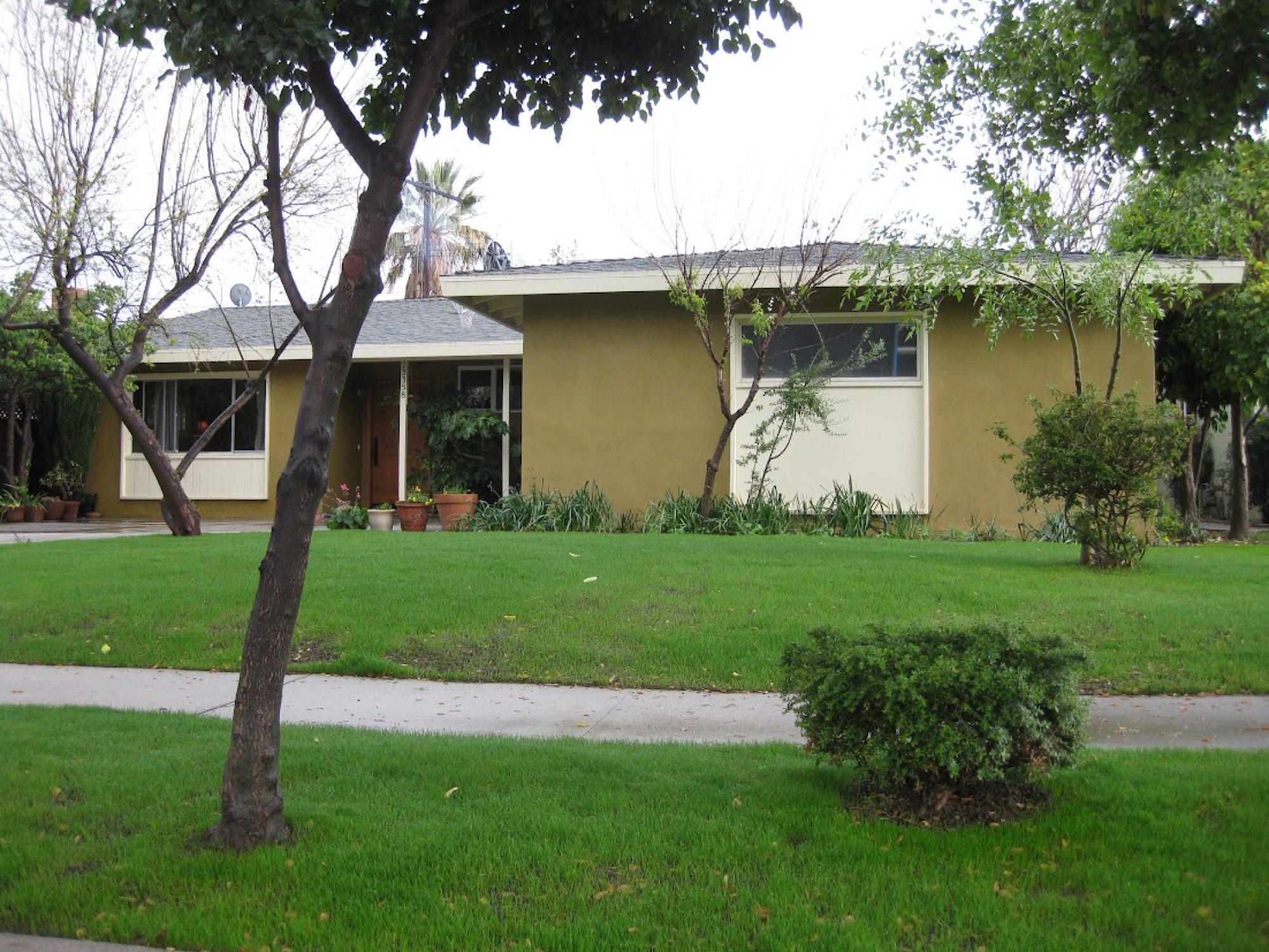
Eric Augusztiny’s entrance yard in West Hills earlier than he eliminated his garden and changed it with a drought-tolerant various.
(Eric Augusztiny)
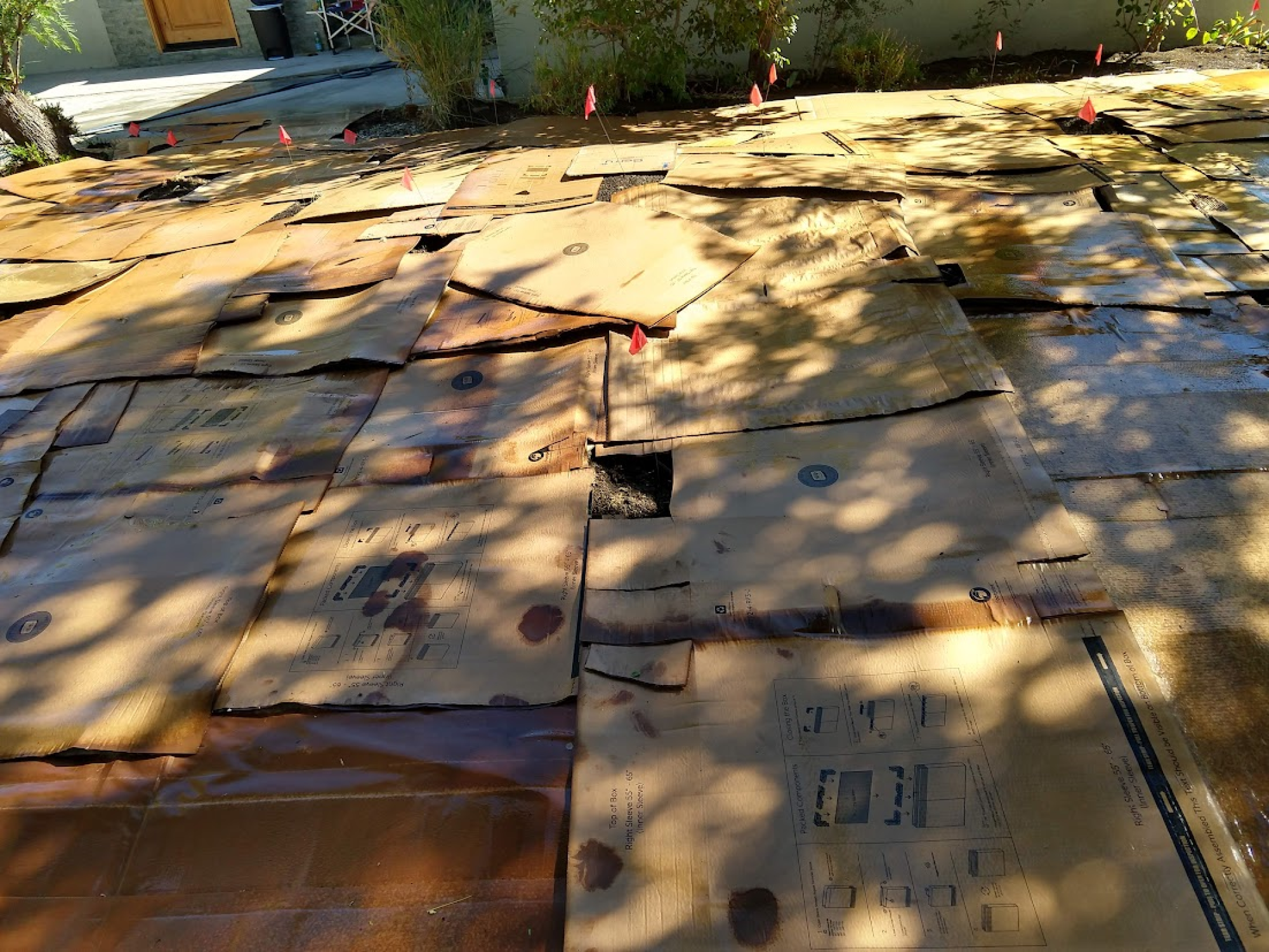
Eric Augusztiny’s entrance garden is smothered in cardboard in the course of the sheet mulching course of.
(Eric Augusztiny)
Suitably educated, Augusztiny determined to tear out his garden and plant a low-water substitute himself. Simply don’t name him a designer. “It was a strategy of determining a easy design, getting the drip system in and placing down the cardboard,” Augusztiny mentioned of the method referred to as sheet mulching, the place the cardboard is wetted down and coated with 3 inches of mulch.
When he smothered his garden with cardboard, his neighbors typically requested him what he was doing. “I advised them I used to be eliminating the Bermuda grass,” he recalled. “All of them advised me, ‘Good luck with that.’”
Taking lessons provided Augusztiny some revelations as he deliberate his backyard. He adopted Adams’ suggestion to “paint with wildflowers” and scattered wildflower seeds on prime of established vegetation. He planted hummingbird sage after he learn that it grows nicely within the shade of oak bushes. Involved concerning the depletion of Western monarch butterflies because of habitat loss, he felt it was essential to plant narrow-leaf milkweed (Asclepias fascicularis). “They’ve since proven up in droves,” he mentioned.
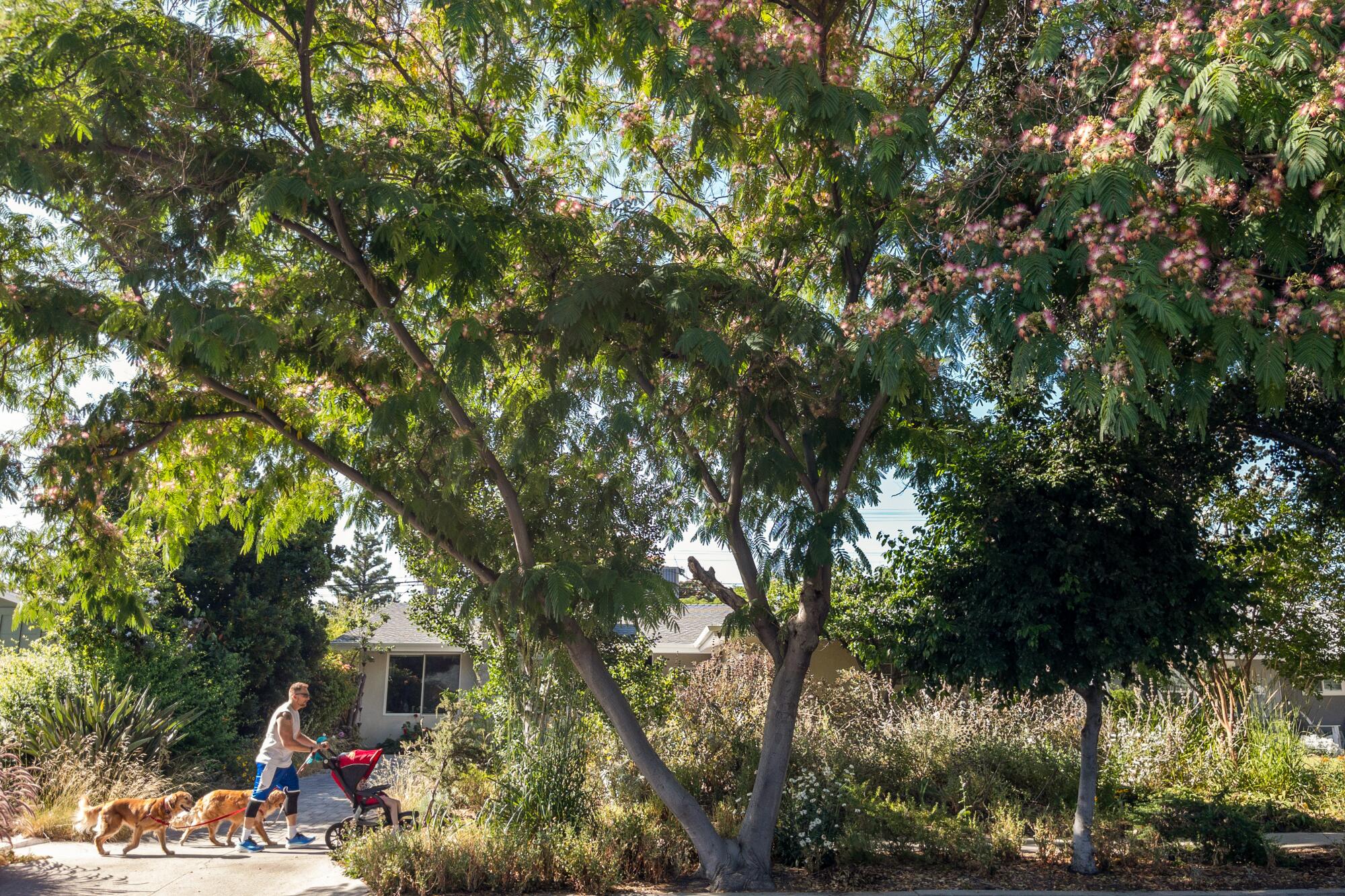
On the parkway, a coast dwell oak, Catalina cherry and silk tree present shade. Augusztiny collects water utilizing a rain barrel and rain chains. He additionally put in drip irrigation.
Concerning vegetation, Augusztiny made treks to native plant nurseries throughout Los Angeles, together with the California Botanic Backyard in Claremont, Theodore Payne Basis in Sunland and Pierce Faculty in Woodland Hills. “Now, I’ve to cease as a result of I’m producing my vegetation from harvesting the seeds and taking cuttings,” he mentioned. “You’ll be able to generate and regenerate the backyard.” He even picked up free animal waste from the Los Angeles Zoo (referred to as “zoo doo”) at the Griffith Park Composting Facility.
He admits he killed some native vegetation initially as a result of he overwatered them in the summertime. That ended when he took a three-month hands-on course in native backyard upkeep with Antonio Sanchez of the Santa Monica Mountains Fund in 2022. “I realized that drought-tolerant vegetation strengthen in the course of the wet season to experience out the dry season,” he mentioned. He stopped drowning vegetation in the summertime as a result of he thought they had been thirsty.
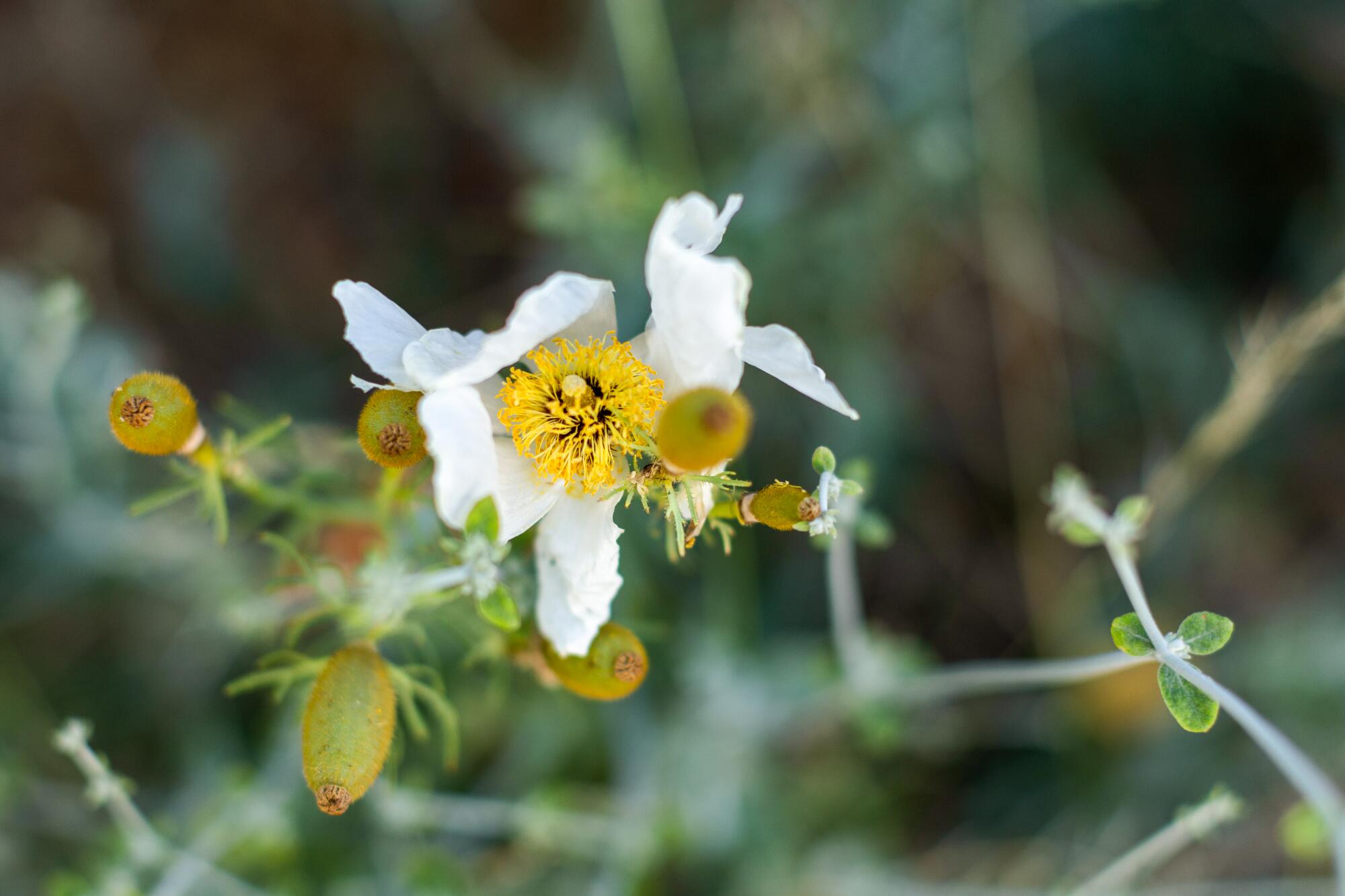
A Matilija poppy grows in Eric Augusztiny’s drought-tolerant entrance yard.
After six years, Augusztiny thinks Adams’ “sleep, creep, leap” mantra has lastly materialized. “She advised us the plantings would sleep the primary 12 months, creep the second after which leap within the third,” he defined. “Ah, however with solely 11.5 inches [of rain] from 2020 to 2022, the backyard wasn’t shifting.”
Quick-forward two years. After two years of file rainfall in Los Angeles, the California native habitat has overwhelmed the entrance yard.
“I hate to steal a title from a Hollywood movie,” mentioned the actor, “however immediately it was all the things, all over the place all of sudden.”
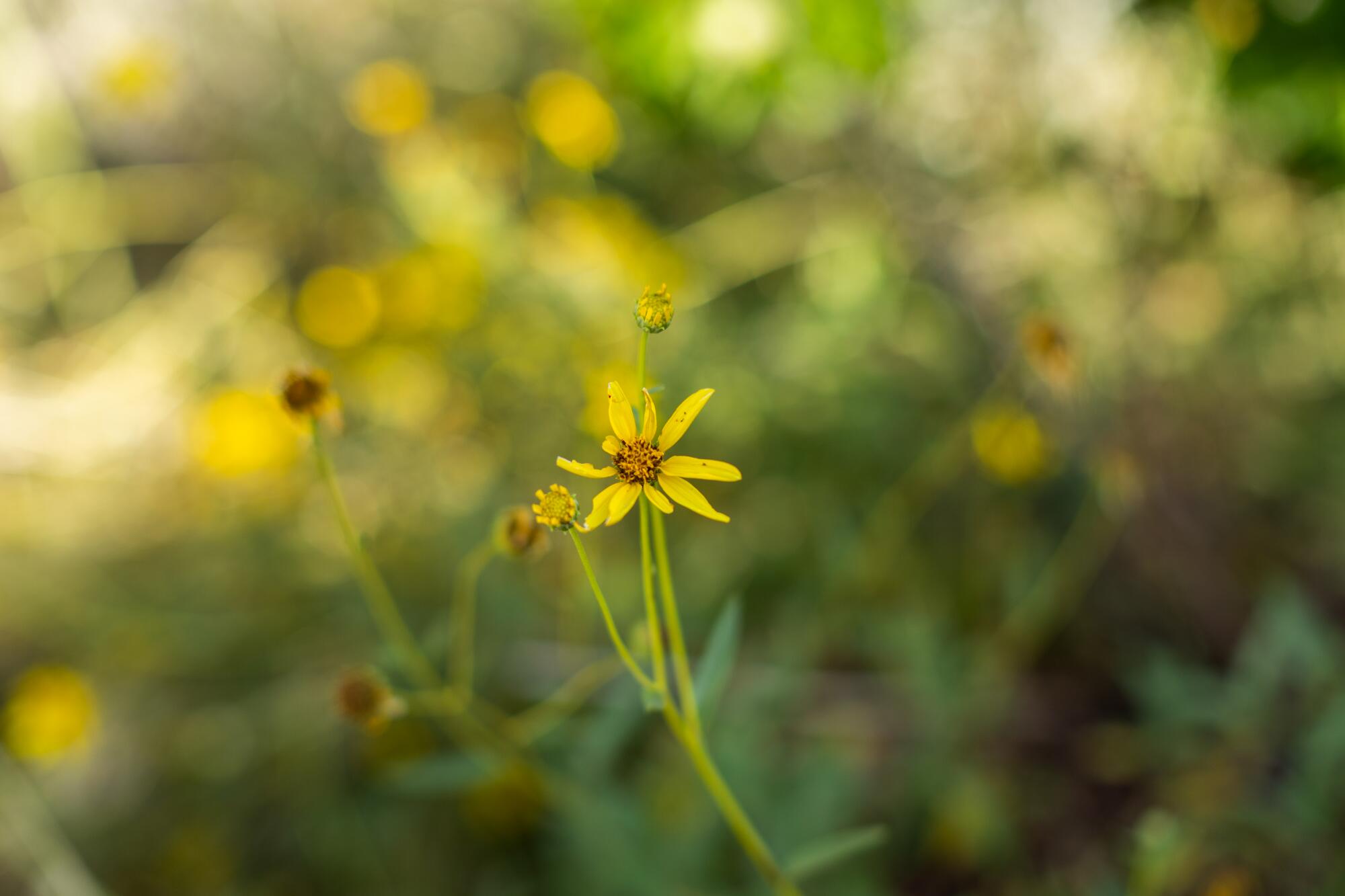
Narrowleaf sunflower grows within the backyard.
The backyard is wild and colourful with a heavenly perfume attributed to the exploding sages — Cleveland (Salvia clevelandii), hummingbird (Salvia spathacea) and white (Salvia apiana) — together with colourful wildflowers just like the fire-resistant California fuchsia (Epilobium canum) and purple Foothill penstemon (Penstemon heterophyllus).
Though most of the bigger drought-tolerant vegetation are planted away from the road, some, corresponding to Bigberry manzanita (Arctostaphylos glauca), are dwarfed by California buckeye (Aesculus californica), coffeeberry (Frangula californica) and sugar bush (Rhus ovata).
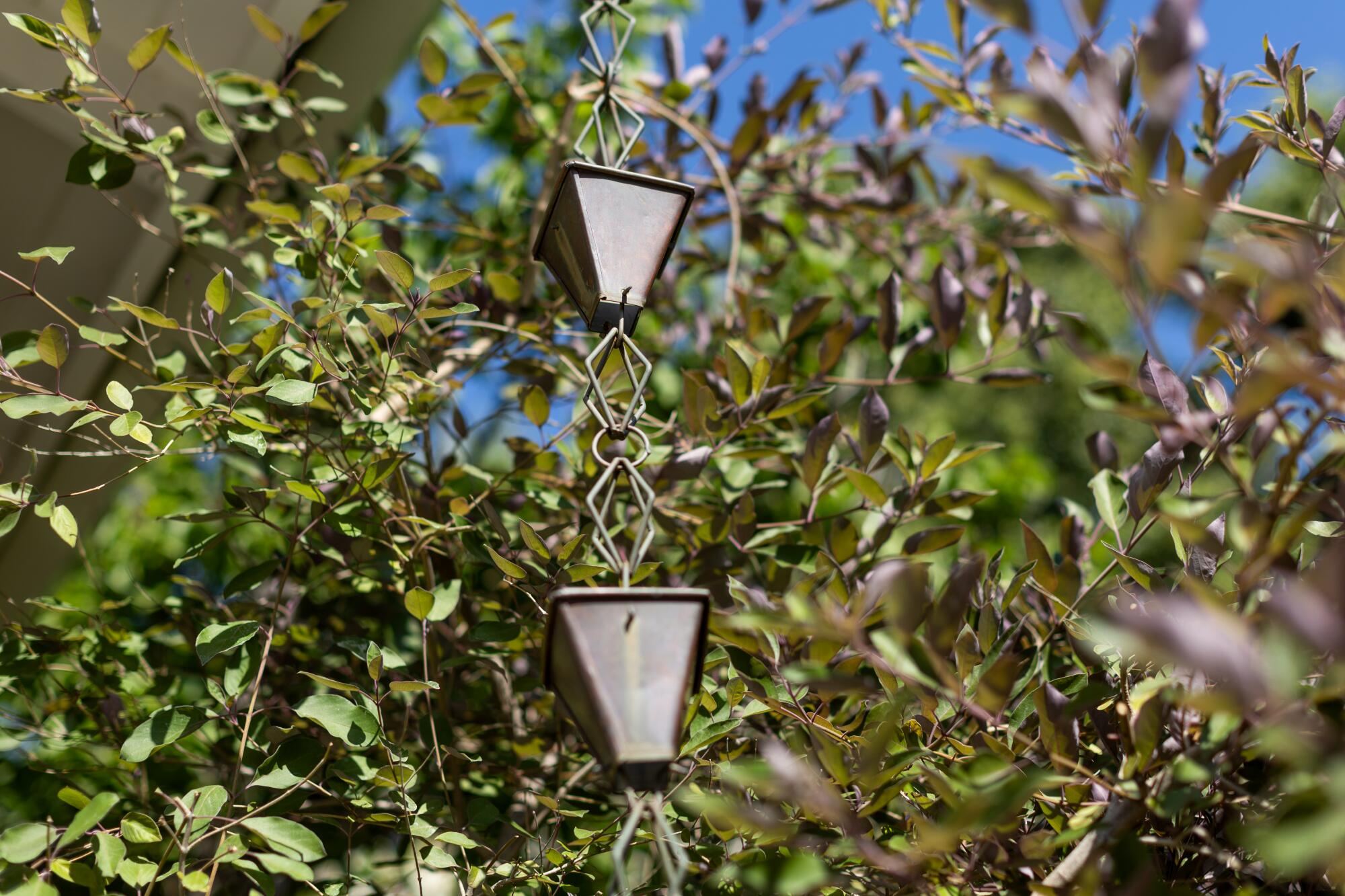
Rain chains seize rainwater from the roof.
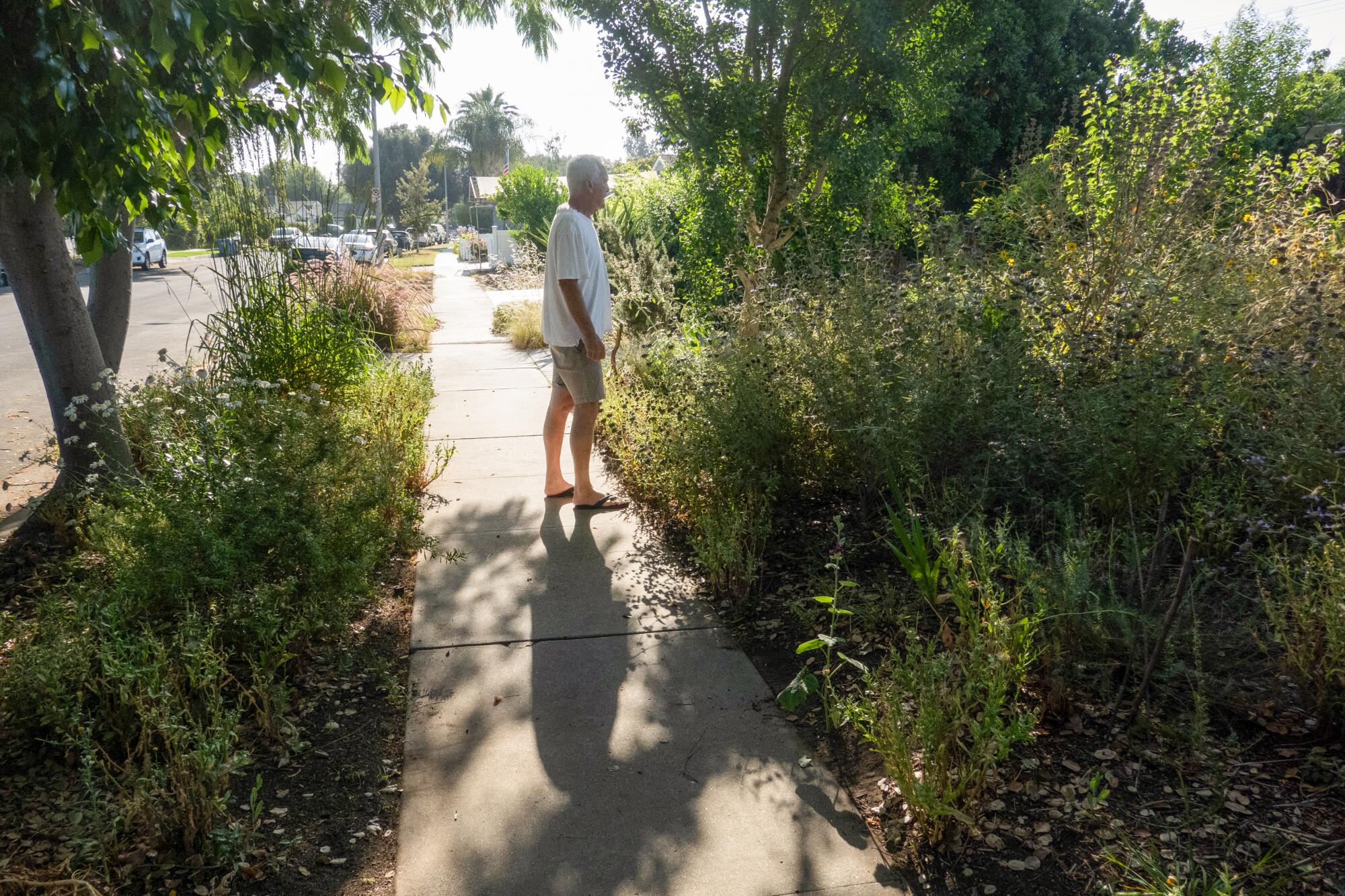
Augusztiny’s entrance yard and parkway strip are overflowing with drought-tolerant vegetation.
Not a gardening novice, the Seattle native passionately advocates the “must do our small half to assist stem local weather change.” He thinks making a native habitat in his entrance yard and putting in rain barrels and a permeable driveway within the face of record-breaking warmth waves is an efficient place to begin.
“I take pleasure in nature, and Los Angeles has all of it,” he mentioned. “I’m not a purist with regards to vegetation. I wish to consult with them as climate-appropriate. However the extra blacktops we are able to eradicate and the much less stormwater runoff there’s, the higher our water high quality and lives can be.”
Now, when neighbors stroll their youngsters to highschool, they don’t ask him what he’s doing in his entrance yard. “They praise the backyard,” mentioned Augusztiny, who waters twice a month. “The backyard is not only for me. It’s for everybody.”
Vegetation on this backyard
Arabian lilac (Vitex trifolia)
Espresso berry (Frangula californica)
Sugar bush (Rhus ovata)
Cleveland sage (Salvia clevelandii)
Slim-leaf milkweed (Asclepias fascicularis)
Black sage (Salvia mellafera)
White sage (Salvia apiana)
Purple sage (Salvia leucophylla)
Bigberry manzanita (Arctostaphylos glauca)
Palmer’s abutilon (Abutilon palmeri)
Desperado sage (Salvia ‘Desperado’)
Penstemon heterophyllus ‘Margarita BOP’
California fuchsia (Epilobium canum)
Purple needlegrass (Nassella pulchra)
Australian emu bush (Eremophila glabra)
Snowberry (Symphoricarpos mollis)
California buckwheat (Eriogonum fasciculatum)
Hummingbird sage (Salvia spathacea ‘Las Pilitas’)
Nuttall’s sunflower (Helianthus nuttallii)
Large wildrye (Elymus condensatus)
Toyon (Heteromeles arbutifolia)
Dudleya abramsii
Coulter’s Matilija poppy (Romneya coulteri)
Ceanothus griseus var. horizontalis ‘Yankee Level’
Fiesta Marigold monkeyflower (Mimulus ‘Fiesta Marigold)


